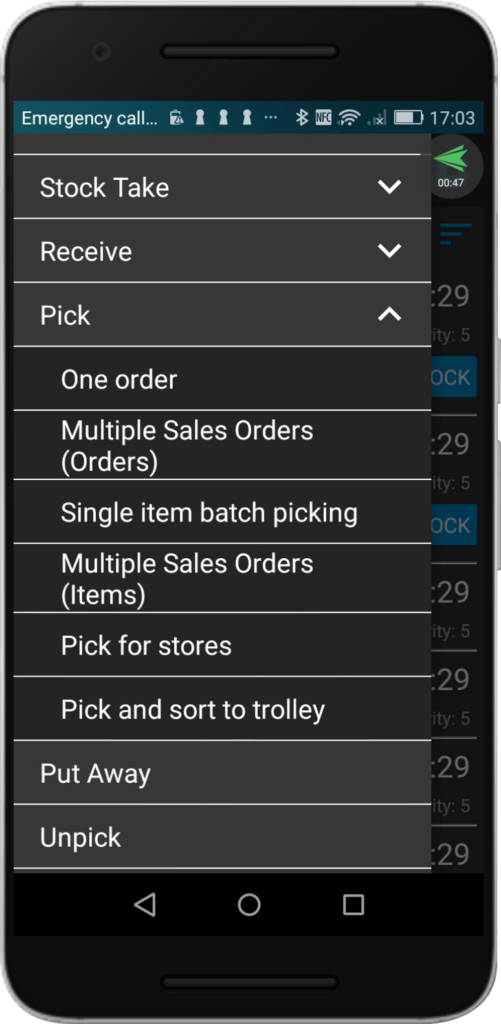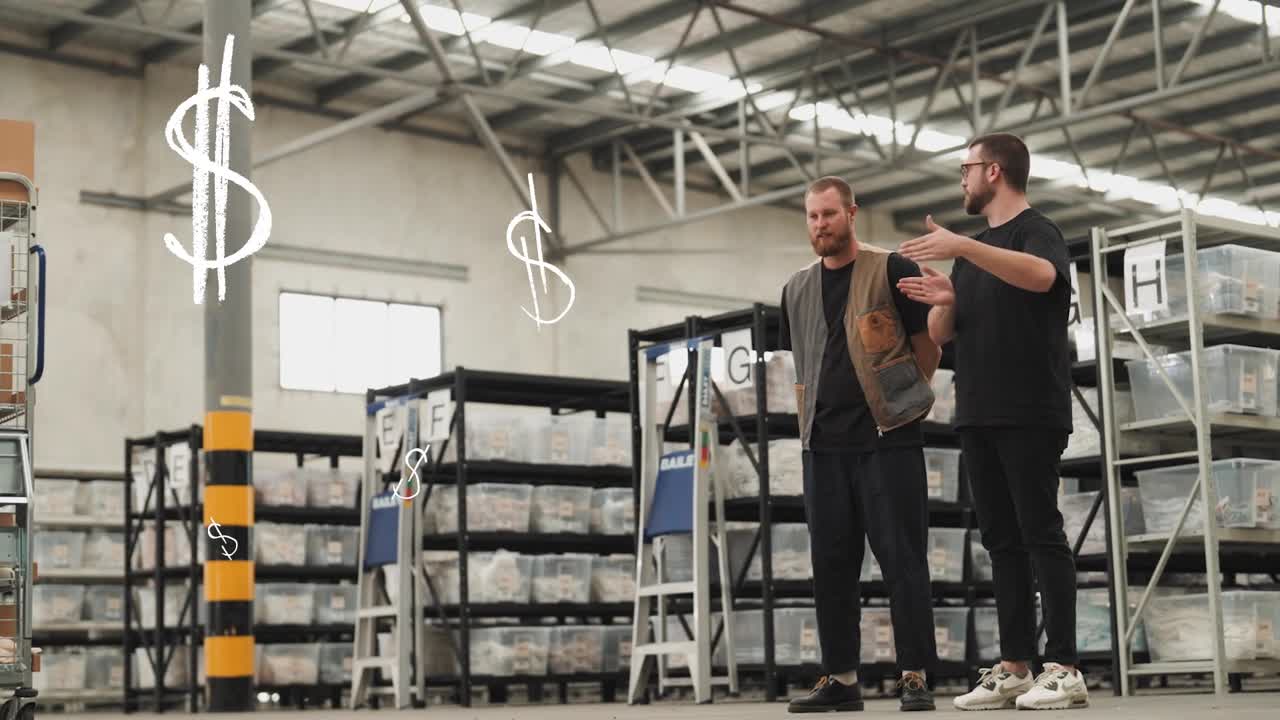We want to be able to take brands away from a few really unproductive, error-strewn places they might be with their order fulfilllment process.
One of the main warehouse problems we see: as customer orders come in and are collected in whatever ecommerce platform is being used, the team will decide when they’ve got enough to get on with some picking and then print off a whole ream of those orders in a big batch. This will leave them with a huge pile of shipping labels, and a long ‘bulk’ pick list… they come back from carrying out that long list of picks, and are faced with the daunting task of matching up all the items with all of the labels/documentation already printed out.
So, instead of pre-printing paper and then trying to match the items up, our approach is to print nothing. Pick lists become actions to follow on the mobile application, ‘ticking’ the item off on the paper picklist becomes scanning the item as you take it from its spot in the warehouse, and then as you finish and get to the point of dispatch, you use the items themselves to reference the order. Scanning an item prints the labels/docs for that item and for that order.
This means:
- We don’t need to pre print labels before we go out and get the items
Then, using our system at the point of dispatch (even with a trolley full of 100 items), you can pick out any item, in any order, and scan it. Because the item barcode is logged against the order number, (and in turn, the printing and label requirements), scanning the item will find the correct order, print the right documents, and automatically trigger the dispatch flow.
Get this process going at scale and we have seen clients pushing out 10,000-25,000 orders a day on the regular, with peak order periods reaching 100,000 orders a day.
So this process saves time… but there must be more than one reason why we have launched a decade long tirade against paper in the warehouse.

Mobile based picking, no paper in sight…!
Paper causes customer service problems
If you print all the labels for all the orders up front, before picking the items, you will be simultaneously creating the tracking number for all of those orders, and therefore notifying all of the customers who are waiting to receive the order that their order has already been dispatched. This is not true! The label may have been printed, but no-one has actually got their hands on the items in the warehouse, let alone handed them over to a courier. Now whilst on a quiet day there might only be a short delay between telling the customer the order has been shipped and actually shipping it, when brands get busy, things get slower, shipping it that same day might not be possible. Moreover, if there’s a problem with one of the items for the order, like the stock isn’t there, or it’s damaged, you’re going to have to email/call up the customer and say “Hey, we are really sorry… we know we told you the order was on it’s way, but actually we lied, we need to delay…”. That is a terrible experience, and incredibly frustrating.
Paper stops your ability to be flexible
In most cases, paper in the warehouse is the product of having ecommerce software for the front end, to receive the orders, and shipping software in the warehouse to print the label with nothing but paper in between the two to make things tick. Another area where this can really cause problems is in inventory allocation and inventory availability.
With paper, to be accurate all the time, it is imperative your website stock availability and your physical stock in the warehouse is matched up 1 for 1, perfectly, and at all times.
However, a lot of businesses will be open to taking ‘back orders’, basically letting oversells happen because they know their suppliers can support them if needed to get the stock. If you’re knowingly taking ‘back orders’, without an inventory system you won’t be able to know the exact quantity that you’ve oversold versus the quantity you do have in stock and can fulfill immediately. Instead, you’re just going to know that you’ve made a certain amount of sales of that item total.
It may even still let you print the shipping label for every order, even if some of those orders can’t be fulfillled at that time, again notifying the customer that their order is on its way, when it isn’t even in the warehouse yet!
Paper kills the customer experience
Picture a black hole. An endless abyss of nothingness, that sucks into it anything that dares float or orbit nearby. Effectively, this is what you create when you print picklists for people to go out into the warehouse with, tick things off, try and find things, come back to the packing area and work out how to get all those items together in the right packages with the right labels.
We’ve actually been to warehouses and found these paper picklists or customer order details printed off down the back of racking, under boxes, torn up and thrown in the corner…! If the only record you have of an order is the printed off details on a piece of paper, you are welcoming with open arms a wealth of opportunity to screw up. How do you track what happens? When it was picked? Did it get picked at all? Was there a problem with that item? Can the picker find the item if it is not where the paper says it should be? Doing this and then sorting the orders is hard enough on a quiet day… if you’re a brand looking to scale, run huge promotions at Black Friday etc, and receive 10x as many orders, it becomes a genuinely impossible, unmanageable workload that drags the warehouse to a halt, and ultimately ruins the experience of all those new customers you’ve been able to reach for the first time.






